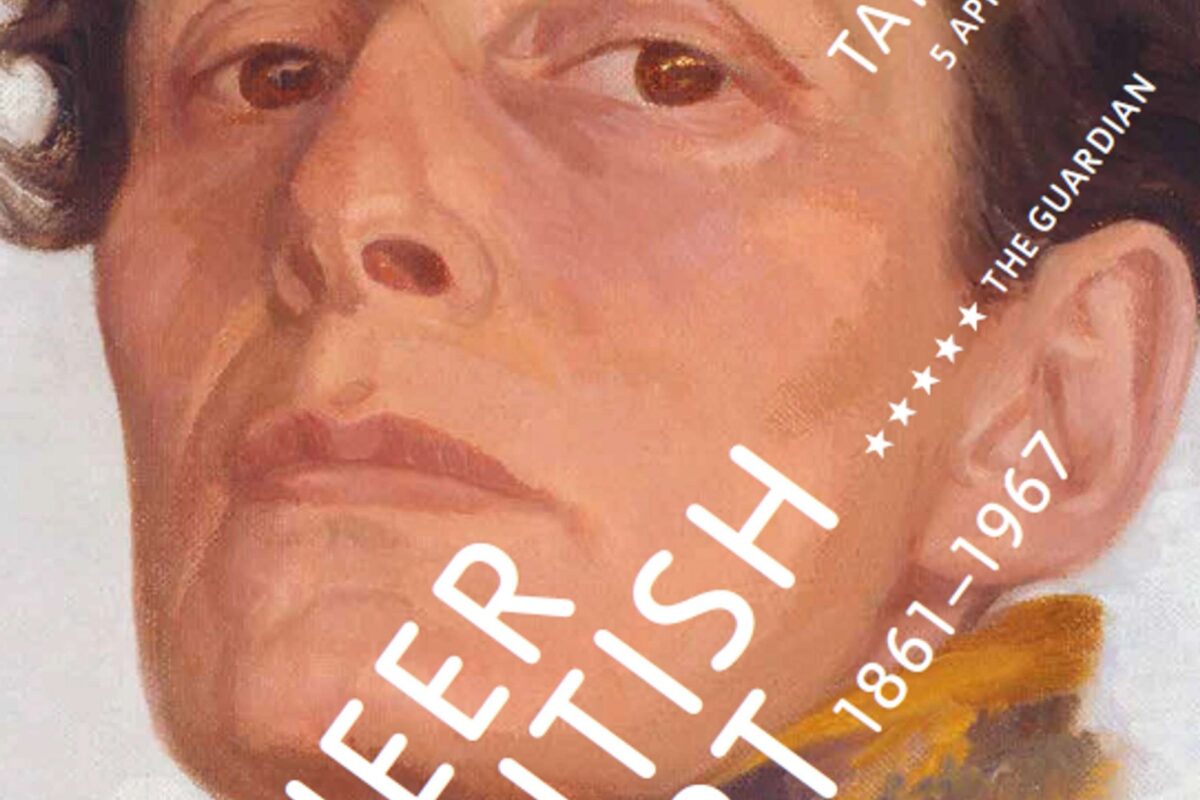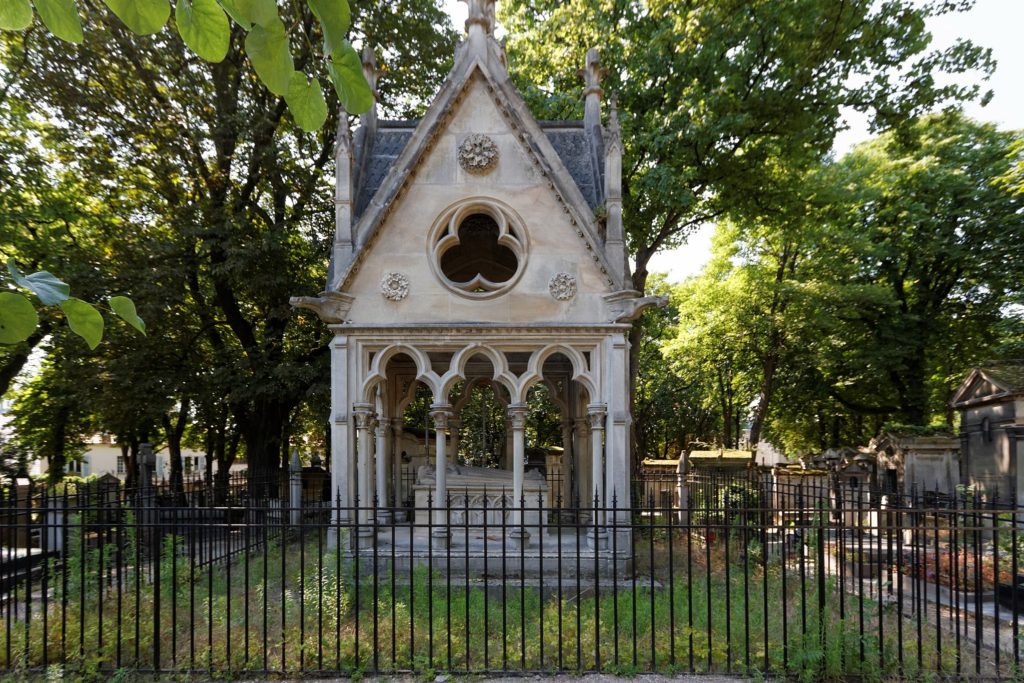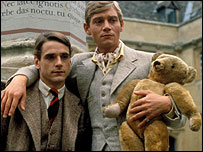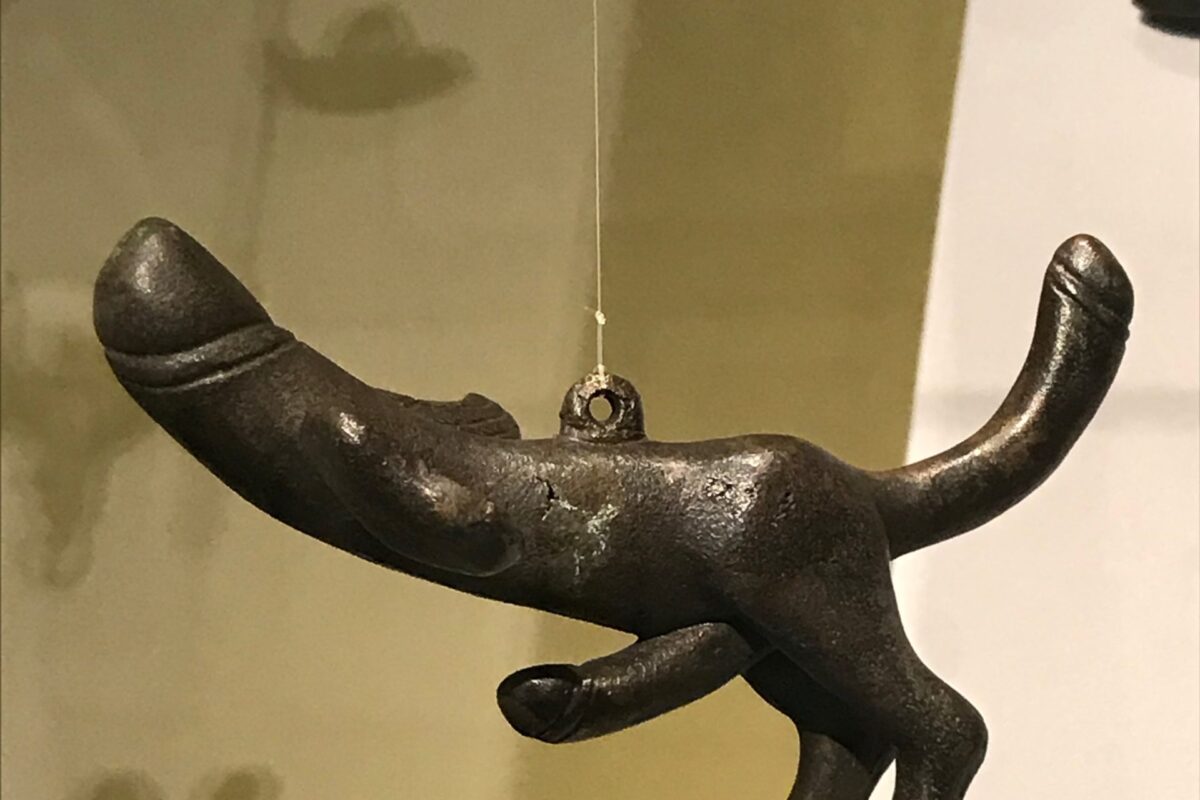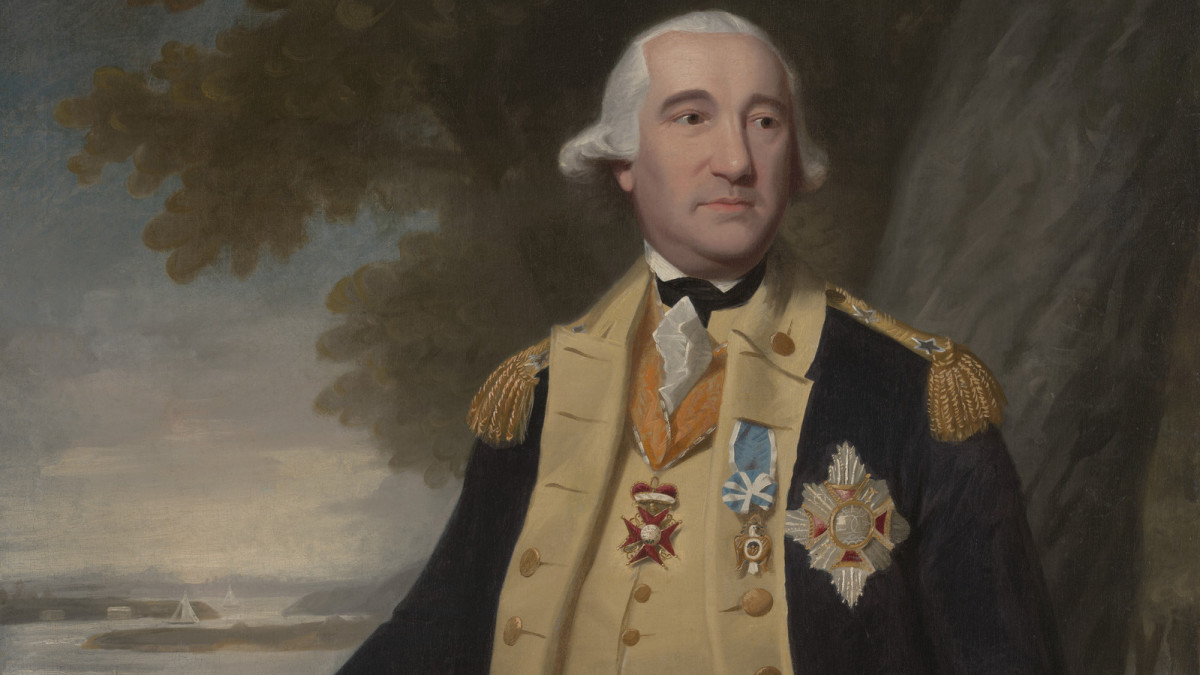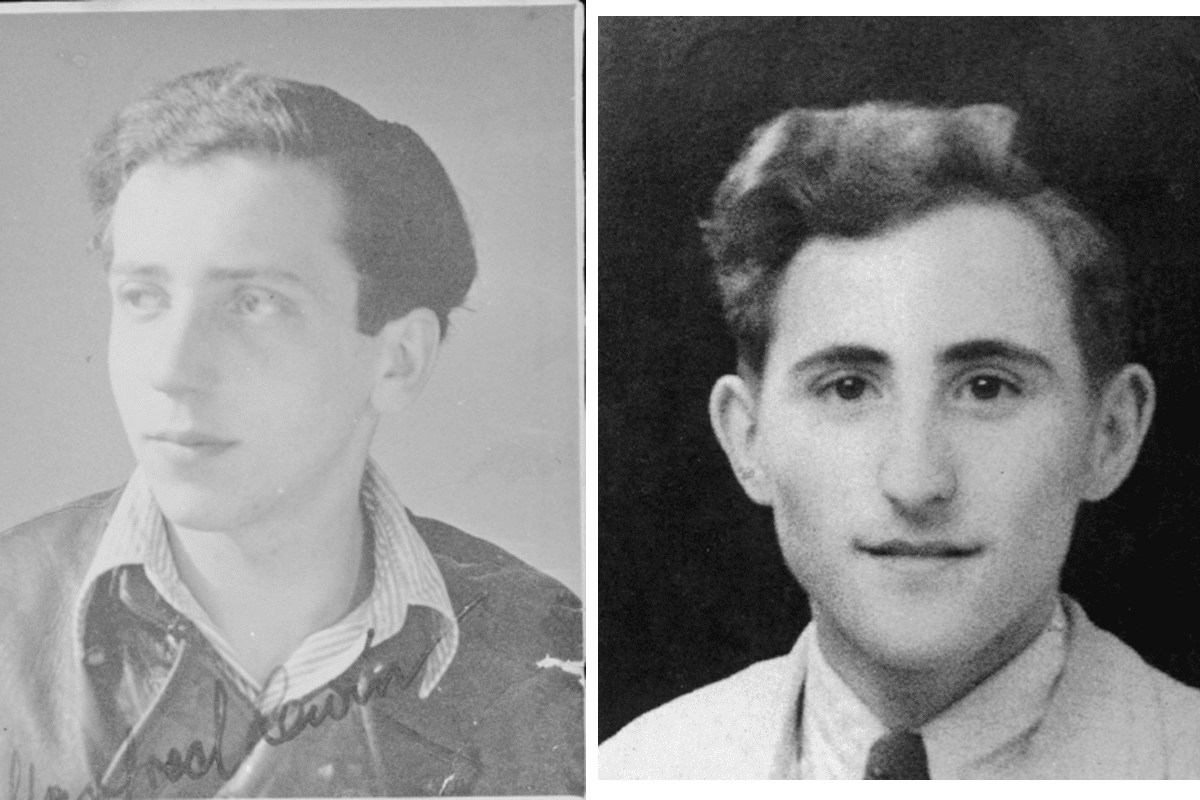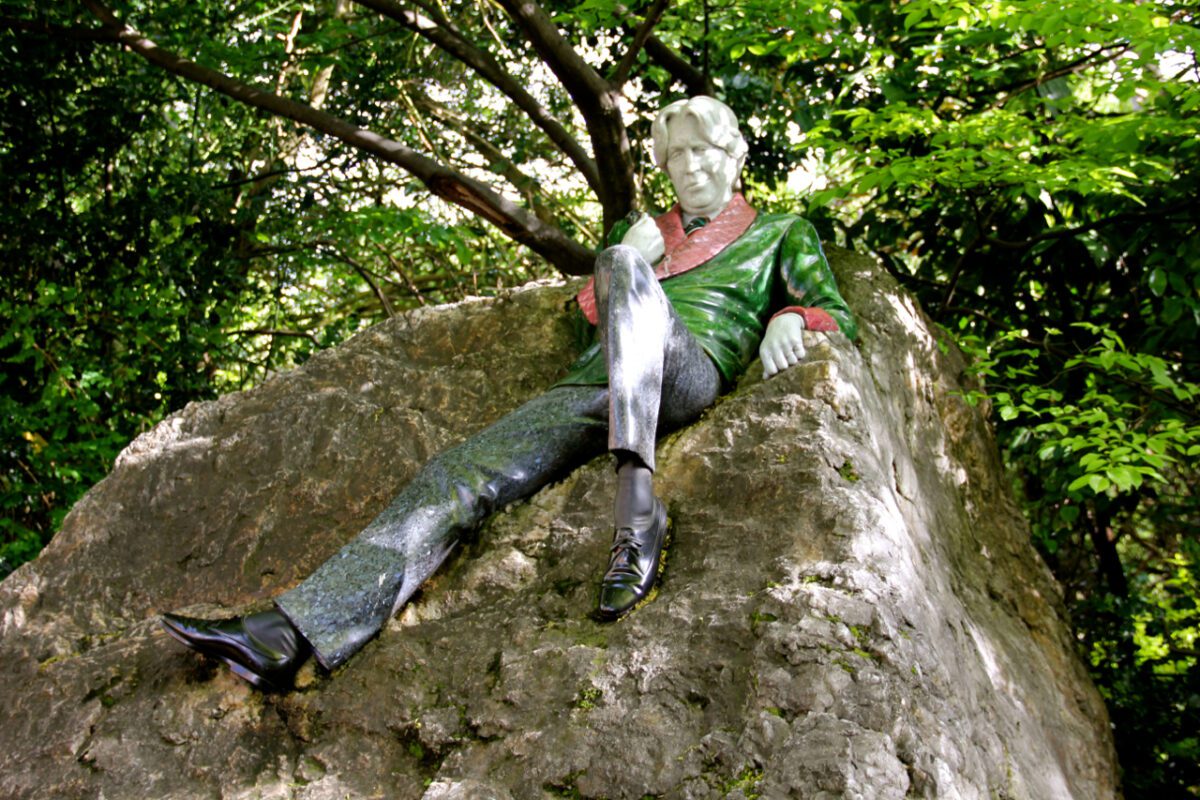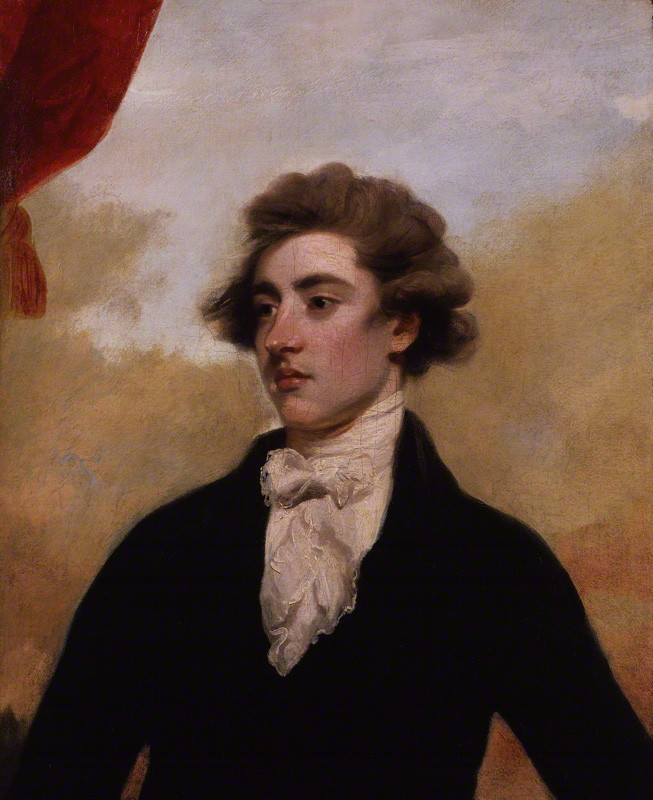In a little over 100 years, between 1861 and 1967, Britain went from punishing male homosexuality with the death penalty to decriminalisation across the vast majority of the country. That may seem like a glacial pace but when we consider the World Health Organisation didn’t officially declassify homosexuality as a mental disorder until 1992, the UK seems ahead of its time. One of the easiest ways to trace the societal and legal shift in attitudes towards sexuality that took place in the UK at this time is to look at the artistic output of the nation. To see how British society went from treating artists like Oscar Wilde and Simeon Solomon as criminals, whose careers were both ruined by ‘gross indecency’ trials, to accepting and embracing artists like David Hockney and Francis Bacon as national heroes is a fascinating journey, and one on which we can all travel thanks to the work of the Tate gallery in London.
Paris’s richest LGBTQ history site is a cemetery!
The founders of Père Lachaise started this off by moving some famous tombs to the new cemetery. You see one of them above. This is the tomb of the iconic romantic couple of the Middle Ages, the theologian Abélard and his abbess wife Héloïse. This idea worked out well. Père Lachaise is in fact a hugely popular tourist destination—the most visited cemetery in the world. And the attraction is its famous ‘residents’, including such luminaries as Chopin, Rossini, and Jim Morrison. LGBTQ celebrities are particularly prominent. Oscar Wilde’s tomb is the most visited in the cemetery, and other famous residents from Paris’s LGBTQ history include Marcel Proust, Gertrude Stein, and Colette.
LGBTQ England and its Queerest Stately Homes
One of the great things about England is its grand, historic houses, what the British call “stately homes.” Today’s post is about two castles with an LGBTQ past. And who better to write about LGBTQ England and its Queerest Stately Homes than Nick Collinson and Dan Vo? Nick is the founder of the LGBTQ working group at English Heritage, and Dan, who developed the well-known LGBTQ tours at the Victoria and Albert Museum and is now project manager of the Queer Heritage and Collections Network, a partnership of the National Trust, English Heritage, Historic England, and Historic Royal Palaces.
Nick: When I decided to form our group at English Heritage, one of the names that was suggested was ‘Stately Homos’. We decided against that name firstly because we are custodians of many other sites besides stately homes (Stonehenge, Hadrian’s Wall, Dover Castle etc…) and also we wanted to include all parts of LGBTQ England and its spectrum of genders and sexualities.
But it got me to thinking about all those homos who lived in stately homes, and all the debauchery that must have gone on in the billiard rooms, bedchambers, back stairs and butteries. Many of these homes are hundreds of years old, and the sheer number of staff they employed means that a significant number must have been interested in a bit of same-sex screwing from time to time. Unfortunately, due to the way history has been recorded, it is incredibly difficult to uncover stories about those ‘below stairs’ but the sexual goings-on of some of the more illustrious inhabitants have been recorded for posterity…
Madresfield Court: Brideshead and the Beauchamp scandal
Madresfield is one of those fairytale gothic erections, set in parkland beneath the Malvern Hills in Worcestershire. It has been in the Lygon family since the 1100’s – longer than any other dwelling in the UK, apart
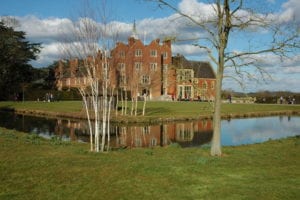
Madresfield
from a few owned by the Royal Family.
The Lygons are famous in the LGBTQ community. Well, not under their real name—but they are the model for the Flyte family in Evelyn Waugh’s Brideshead Revisited: Sebastian, the narrator/Waugh’s big college crush was called Hugh Lygon in real life. But while the novel focuses on Sebastian’s *father’s* scandal, Waugh never mentions what the real scandal was about.
Well….William Lygon, 7th Lord Beauchamp, inherited the house in the late 1800s. He was holder of many high
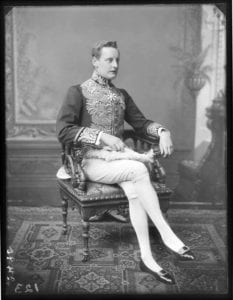
Lord Beauchamp
public offices, including Governor of New South Wales in Australia. He suffered a spectacular fall from grace when he was ‘outed’ to the King by his bitter and twisted brother-in-law Hugh “Bend’or” Grosvenor, Duke of Westminster (probably because he had such a gay nickname himself!). We know Beauchamp had a penchant for good looking servants, as detailed by this tongue-in-cheek article in the Australian Star:
The most striking feature of the vice-regal ménage is the youthfulness of its members … Rosy cheeked footmen, clad in liveries of fawn, heavily ornamented in silver and red brocade, with many lanyards of the same hanging in festoons from their broad shoulders, [who] stood in the doorway, and bowed as we passed in … Lord Beauchamp deserves great credit for his taste in footmen.
While he was hosting a dinner in the medieval Great Hall at Madresfield, one of the guests was shocked when they overheard Beauchamp saying to the handsome Butler, Bradford, “Je t’adore”. The guest relayed this exchange to fellow guest Harold Nicolson (see below) in disbelief, but Nicolson, in all his bisexual wisdom, replied “Nonsense – he said ‘shut the door.’”! Always looking out for each other *wink wink nudge nudge*…
Madresfield Court is littered with little material clues to the aesthete Earl’s homosexuality, from the quartz balusters surrounding the mezzanine floor in the center of the house, to the seat covers in the library that he embroidered himself while in exile. I’m not saying that his propensity to sew and his love of shiny things is evidence enough for his being gay, but these little details add a rich timbre to the stories about him. Looking at and visiting the places where people actually lived, provide an extra dimension and tangibility to their stories. Beauchamp definitely had the Queer Eye!
Sissinghurt Castle: Queer Love Triangles in an Idyllic Garden
Dan: Great to hear Harold Nicholson would look out for a fellow indulgent queer! He was certainly one who succumbed to much temptation in his lifetime, and where better a backdrop for illicit liaisons than in a garden. I would like to conjure up in your mind a glorious and bountiful Garden of Eden, where queer sexuality was as fragrant, and flagrant, as the rich blooms. The setting is Sissinghurst Castle Garden, and it was the creation of husband and wife Harold Nicholson and author Vita Sackville-West—a couple that had a fascinatingly post-modern harmonious understanding concerning each other’s extramarital, same-sex affairs. Not that it wasn’t sometimes complicated, for example when Vita had a love affair with Harold’s sister Gwen St Aubyn. Let’s return to that shortly.
Vita called Sissinghurst her “Sleeping Beauty’s castle.” What’s remarkable is the way in which the garden was
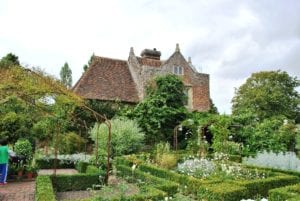
Sissinghurst white garden
created in order to foster the many relationships that Harold and Vita had. Vita reminisced about the warm moonlit summer evenings, when love could flourish among the flowers and bushes arranged into intimate outdoor rooms and pleasant vistas. There living quarters were also divided in a similar way; the couple’s younger son Nigel (whose book Portrait of a Marriage revealed his parents’ lifestyle to the public) compared the house to a village, where everyone could live together, yet also have their own separate and private lives. Vita for instance claimed the romantic Elizabethan Tower, where she had her study, whereas Harold’s study was to be found in the South Cottage. The careful organization of the couple’s life was also seen in the movements of their lovers. Harold worked during the week in London, where he often shared his bed with a series of younger men. Vita would send her lovers, whom Harold called her béguins—infatuations—away for the weekend when Harold returned to Sissinghurst, although sometimes he arrived with another guest that his boys would dismiss as “one of Daddy’s new friends”.
Vita’s lovers included her sister-in-law Gwen St Aubyn, socialite Violet Trefusis, and most famously author Virginia Woolf, who imaginatively portrayed Vita as the gender-shifting hero/heroine of her novel Orlando. As
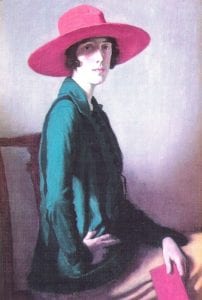
Vita in 1918 by William Strang
was said of the Bloomsbury group, Vita tended to “love in triangles”. The triangle between Vita, Harold, and Harold’s sister Gwen certainly illustrates the unique marriage arrangement between Vita and Harold. Another significant and perhaps even more complicated love triangle was the one between Vita, Violet, and Virginia. Violet fell in love with Vita while they were still teenagers, and while both married, the relationship almost broke up both marriages. Vita even interrupted Violet’s honeymoon to demand Violet sleep with her, and some accounts indicate Violet had given exclusive sexual rights to Vita alone! Harold was unusually perturbed and put his foot down and (having flown to France in a two-seater with Violet’s husband to recover Vita) demanded an end to the relationship. While her affair with Virginia occurred later, the ghost remained, and Virginia acknowledged this in Orlando by having Violet appear as Princess Sasha, the object of Orlando’s deepest affection.
Orlando is set in (a fictional version) of another nearby stately home Vita’s childhood and ancestral home, Knole, but it is at Sissinghurst—and especially in the garden—that one finds the essence of Vita’s (and Harold’s) amazing take on sexuality and relationships, making it one of the greatest Stately Homes in LGBTQ England.
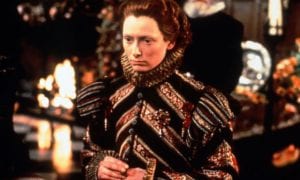
Tilda Swinton as Orlando
Check out Nick and Dan’s tour of LGBTQ England and its queerest stately homes on Zoom, Sunday August 29, 2020.
Penises in Art on the Unhung Heroes Tour
Penises in art are a bigger theme than you might think. After all, what is the number one question people ask in the Greek and Roman collection of any museum? There is no competition: why the penises in Classical art are smaller than real-life average adult penises. And the second is: whether Christians really broke off the penises that are missing from so many male nude statues.
First LGBT trail in a US museum!
Over the last few years, several museums in Europe have organized an LGBT trail, i.e. a self-guided trail following LGBT themes through the museums’ collections. The British Museum and the Prado are both prominent examples. No museum in the US has ever put together such a trail until now, when the Wadsworth Athenaeum in Hartford has launched one. The trail, called “Out On View,” covers 16 artworks spread through the museum.
The Wadsworth has a particularly rich LGBT collection. This is partly due to the influence of the Director in the 20’s-40’s, A, Everett “Chick” Austin. Austin was an important member of the (closeted) LGBT art scene in pre-war New York. He created a connection between the Wadsworth and a number of prominent LGBT artists of his day, while also purchasing a number of homoerotic works for the collection from earlier periods. It is an ideal museum for America’s first LGBT trail.
The Revolutionary War Hero Who Was Openly Gay
Gay men have always been part of the American military. In an era before gay marriage or open pride, military men fell in love, formed passionate friendships and had same-sex encounters same-sex encounters. Due to social and official discrimination, though, most of their stories have gone untold. But in the case of one of the military’s founding heroes, homosexuality was always part of the story.
Baron Friedrich von Steuben, a Prussian military man hired by George Washington to whip the Continental Army into shape during the darkest days of the Revolutionary War, is known for his bravery and the discipline and grit he brought to the American troops. Historians also think he was homosexual—and served as an openly gay man in the military at a time when sex between men was punished as a crime.
What’s So Gay About Greece?
Why is Greece a great place for travel? Well, it doesn’t hurt that Greece has some of the world’s most beautiful beaches and that some of them–especially Mykonos–have a wild gay club scene. But there is another, fascinating level to Greece for the gay traveler, because travel to Greece is all about its ancient culture and the glorious ruins it left behind.
A gay Jewish hero in Nazi Berlin
There are not many people in history as cool as Gad Beck, a gay Jewish hero in Nazi Berlin. Beck was the child of a Jewish father and a Christian mother. This kind of thing was relatively common in early 20th century Berlin. It was also the kind of thing that drove the Nazis wild, but paradoxically, it also protected Beck, his sister, and even his father, all of whom survived the war. Beck’s Christian relatives, it must be said, were never turned by the Nazis and helped protect Beck’s family too, to the extent of their power: at least they helped feed them and tried to hide them when it was necessary. The increasing separation of Jews from the rest of society made Beck feel very attached to his Jewish identity, however. He insisted, against his parents’ will, on going to a Jewish high school. He had a long series of Jewish boyfriends. And ultimately, became a leader of the anti Nazi resistance in Berlin, serving as the lynchpin of a system that kept many of the last surviving Jews in the city hidden, fed, and alive.
Seeing Gay History in Dublin and Paris
Traveling to Europe this summer? Want to do something gay? Here is a suggestion. Along with going to a gay bar and chatting with the locals, how about looking up your destination’s gay history and trying to see some things connected to it? It might take some deep research, but you can find out not only about local gay politics now, but also things like Shakespeare’s sexuality or the world of fashionable lesbians in 19th century Paris—and make your trip that much more interesting. As a historian, I can tell you that it is a mistake to assume that history is straight; and as an *art* historian, I suggest you keep an eye on the art museums, where LGBTQ themes are often present!
In many of Europe’s major cities, there are monuments that have gay connections and also interesting places or artworks with gay connections that you might never see if you don’t look into their gay side. This is particularly true in London, Paris, Berlin, Rome, Florence, Venice, Naples and Athens—but there are interesting connections to gay history in many other places. Look into it! You never know what you will find.
Want to read more? See Professor Lear on the blog of the International Gay and Lesbian Travel Association.
Gay Secrets at the Art Museum
The world’s art museums are full of Gay Secrets. These two gorgeous objects from the Museum of Fine Arts Boston are a great example. They are the kind of things you would just glance at in a museum—and then you’d move on to something you knew more about. But hold on a minute! Both belonged to a man named William Beckford (see the portrait from the UK’s National Portrait Gallery above)—who was the subject of the biggest gay scandal in 18th century England.

